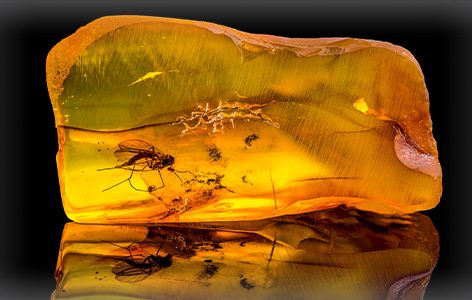
By: Joe Walton, ORT Times Science Writer
Before SARS-CoV-2 got its official name, it was dubbed novel coronavirus. However, novel is not an accurate description for our relationship with viral invaders. For one group—retroviruses—the relationship is so longstanding that the line between host and virus has blurred. Remnants of ancient invaders are deep within our genetic code, and as one UHN research team discovered, ‘fossilized’ viral remains may hold the key to combating another adversary: cancer.
Viruses and the Definition of Life
From the Latin for poison, a virus, simply put, is a set of instructions written in nucleic acids, enclosed in a protein coat. Inert in isolation, once inside cells viruses hijack replication machinery to copy their programs, synthesize proteins and assemble fresh infectious particles. This host dependence has led to a debate: Are viruses alive? Or do they straddle the boundary between life and macromolecular chemistry? Whatever the answer, these entities inhabit every part of the natural world—even viruses get viruses!
For would be hosts, this abundance is menacing, but not all viruses infect humans, and evolution has provided formidable immune defenses. Nevertheless, retroviruses have developed a particular lifestyle ‘quirk’ that has made them exceptional adversaries.
The Retroviral Self
Genetic information generally flows from DNA to RNA to proteins, but for retroviruses this paradigm is reversed. Viral RNA is converted to DNA, which integrates into host genomes as a provirus. Rarely, this viral integration occurs in ‘germline’ cells (sperm and eggs). If the progeny of those cells survive, the virus becomes part of the genetic constitution of the resulting lineage. About 8% of the human genome is composed of ancient retroviral elements—that’s more genomic real estate than protein coding genes!
HERVs and ‘viral mimicry’
The human endogenous retroviruses (HERVs) within us have mostly degraded and are under strict regulatory control. UHN researchers discovered that reawakening these elements in cancer can harness the power of the immune system in a phenomenon called ‘viral mimicry.’
“Several classes of repetitive elements in our DNA, including endogenous retroviruses, are kept dormant by epigenetic repression,” says Dr. Daniel De Carvalho, study lead and Senior Scientist at Princess Margaret Cancer Centre. Epigenetics describes the regulatory system of chemical ‘bookmarks’ used to control underlying genetic programs.
“Our initial discovery was that drugs targeting repressive epigenetic marks can lead to reactivation of endogenous retroviruses and formation of double-stranded RNA (dsRNA). The cells then recognize these dsRNAs as molecular patterns associated with viral infection,” he adds. The result is “mimicry of a viral infection, leading to an antiviral response directed against cancer cells.”
Since first published in Cell in 2015, the phenomenon of viral mimicry has been found to be widespread throughout cancer biology. Dr. De Carvalho admits that current drugs present challenges, but points out that “clinically, there is interest in inducing ‘viral mimicry’ to increase sensitivity to immunotherapies.”
Like amber-trapped mosquitoes, HERVs represent the remnants of an ancient world and remind us that our relationship with viral pathogens is anything but novel.




